Automatic disconnection
The Standard IEC 60364 prescribes automatic disconnection of the supply for protection against indirect contact.
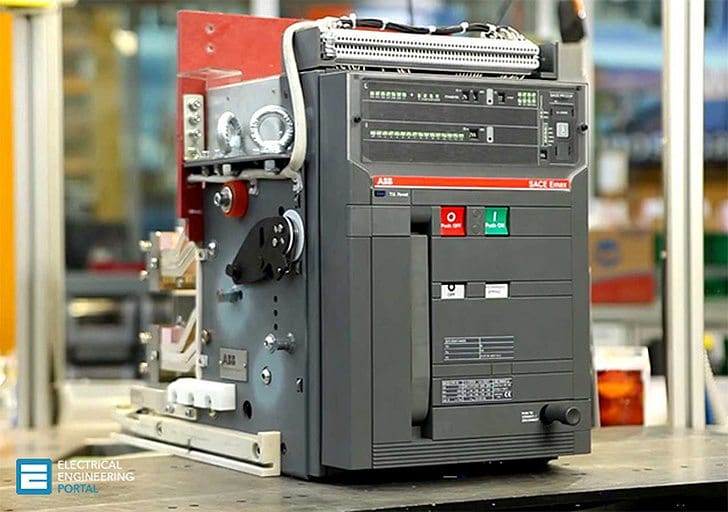
What does it mean //
The protective device shall automatically disconnect the supply so that, in the event of a fault between a live part and an exposed-conductive-part or a protective conductor, a prospective touch voltage exceeding 50 V a.c. (25 V in special environments) does not persist for a time sufficient to cause a risk of harmful physiological effect in a person in contact with simultaneously accessible conductive parts.
This protective measure requires co-ordination between the connection to earth of the system and the characteristics of the protective conductors and devices.
- Automatic circuit-breakers with thermomagnetic release
- Automatic circuit-breakers with microprocessor-based electronic relay
Hereunder there is a description of such protective devices.
Automatic circuit-breakers //
1. With thermomagnetic release
The protections ensured by the automatic circuit-breakers equipped with thermomagnetic release are:
- Protection against overloads;
- Protection against short-circuits;
- Protection against indirect contacts.
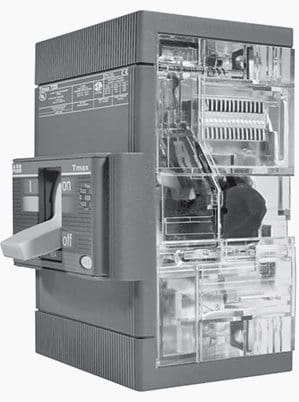

The protection against overload is provided by the thermal release with inverse time-delay curve, i.e. the higher the overload current, the faster the tripping time.
The protection against short-circuit is provided through the magnetic release with an indipendent time trip curve, i.e with disconnecting time independent from the short-circuit current.
The protection against indirect contacts can be carried out both by the thermal release as well as by the magnetic release since the earth fault current involves at least one phase; if this current is high enough, it can cause the tripping of the circuit-breaker.
Figure 1 shows an example of the earth fault current path in a system with the neutral is directly earthed and the exposed-conductive-parts are connected to the same earthing arrangement of the neutral (TN system) and the trip curve of a thermal magnetic circuit-breaker type Tmax T1C160 R160.


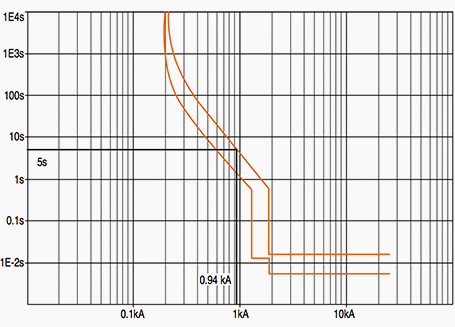

As the diagram shows, by assuming an earth fault current of 940 A, the circuit-breaker shall trip in maximum 5s (value read on the curve with the higher tolerance).
2. With microprocessor-based electronic relay
The protections provided by the automatic circuit-breakers with electronic relays are completely analogous to those assured by the circuit-breakers with thermomagnetic release.


The protection functions implemented by microprocessor-based electronic relay allow protection against:
- Overload (protection L),
- Short-circuit (protection S and I) and
- Indirect contact to be realized.


Electronic releases allow to get an accurate settings both as regards the trip times as well as the current thresholds so that the installation requirements are fully satisfied. Figure 3 shows the same example as before, but a circuit-breaker type Tmax T2 S160 PR221DS-LS/I In160 with electronic release is installed as protective device.




The possibility of setting a low magnetic threshold (at about 750 A) allows to achieve a trip time corresponding to the magnetic tripping (some tens of milliseconds), which is remarkably quicker than the time obtainable under the same conditions with a thermal magnetic circuit-breaker of the same size.
Tmax molded case circuit breaker (VIDEO)
Reference // Distribution systems and protection against indirect contact and earth fault – ABB




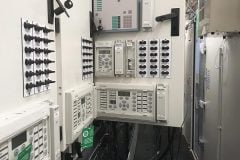


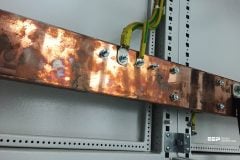

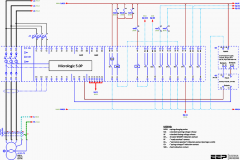

Easy to read articles with deeper insight into electrical engineering, bless you.
Read & thank you for posting.
Very good article we appreciate it
Very good article
Will this work with a high resistance ground system?
there’s an option called LSI-G for the electronic relay on ABB equipments, that “G” parameter is to detect any fault current to ground via a current transformer directly connected to the Power Circuit Braker.
Thanks for posting this article